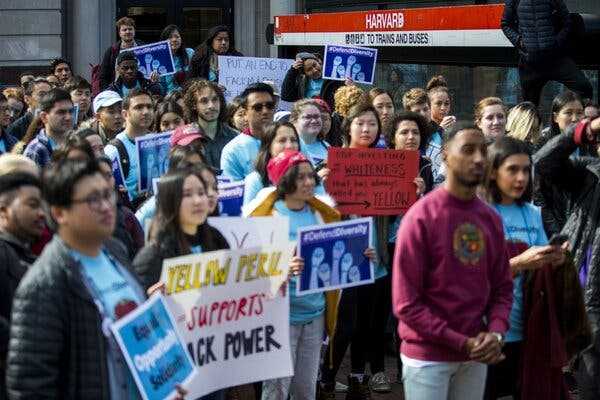Two “race-neutral alternatives” are frequently proposed: a search for socioeconomic diversity, which is often a proxy for racial and ethnic diversity, and a plan to admit the top candidates from every high school, while trying to expand recruitment.
-
Send any friend a story
As a subscriber, you have “>10 gift articles to give each month. Anyone can read what you share.
Give this articleGive this articleGive this article

Demonstrators supporting Harvard’s admission policy in Cambridge, Mass., in 2018.
If the Supreme Court were to do away with affirmative action, it would remake admissions across the country. A key question would be what would replace it as a system of achieving a diverse college class.
Two “race-neutral alternatives” are frequently proposed: a search for socioeconomic diversity, which is often a proxy for racial and ethnic diversity, perhaps using ZIP codes as a rough guide to income levels, and a plan to admit the top candidates from every high school, while trying to expand recruitment.
Richard Kahlenberg, who has studied race-neutral alternatives, has argued that in practice affirmative action may produce a class that is racially and ethnically diverse, but economically homogeneous.
“To its credit, Harvard picks classes that look like today’s racially diverse America; indeed, most undergraduates are students of color,” Mr. Kahlenberg, who testified for the plaintiffs, wrote in an article about affirmative action just published in The Atlantic.
But, he goes on to say, research by the economist Raj Chetty found that Harvard has 15 times as many students from the richest one-fifth of the population as the poorest one-fifth. At the University of North Carolina at Chapel Hill, Mr. Kahlenberg wrote, students in the top one-fifth of income are 16 times as plentiful as in the bottom one-fifth.
Harvard has argued that it would not be able to admit such a high caliber of students if it gave a stronger preference than it already does to low-income students; Mr. Kahlenberg says the difference would be slight.
Another model is Texas’s “Top 10 Percent Law,” effective in 1998, guaranteeing top students in Texas a place at one of the public universities. Because many high schools in Texas are segregated, many Black and Latino students are admitted under the plan.
But the flagship school, the University of Texas at Austin, still adds an extra layer of consideration of race, among other factors, for students not guaranteed admission. As a matter of mathematics, the system may not work in states where there are few majority-minority schools. Some research has suggested that aggressive recruitment efforts are needed to encourage high-achieving poor students, in particular, to apply to and attend college far from home.
Source: nytimes.com



